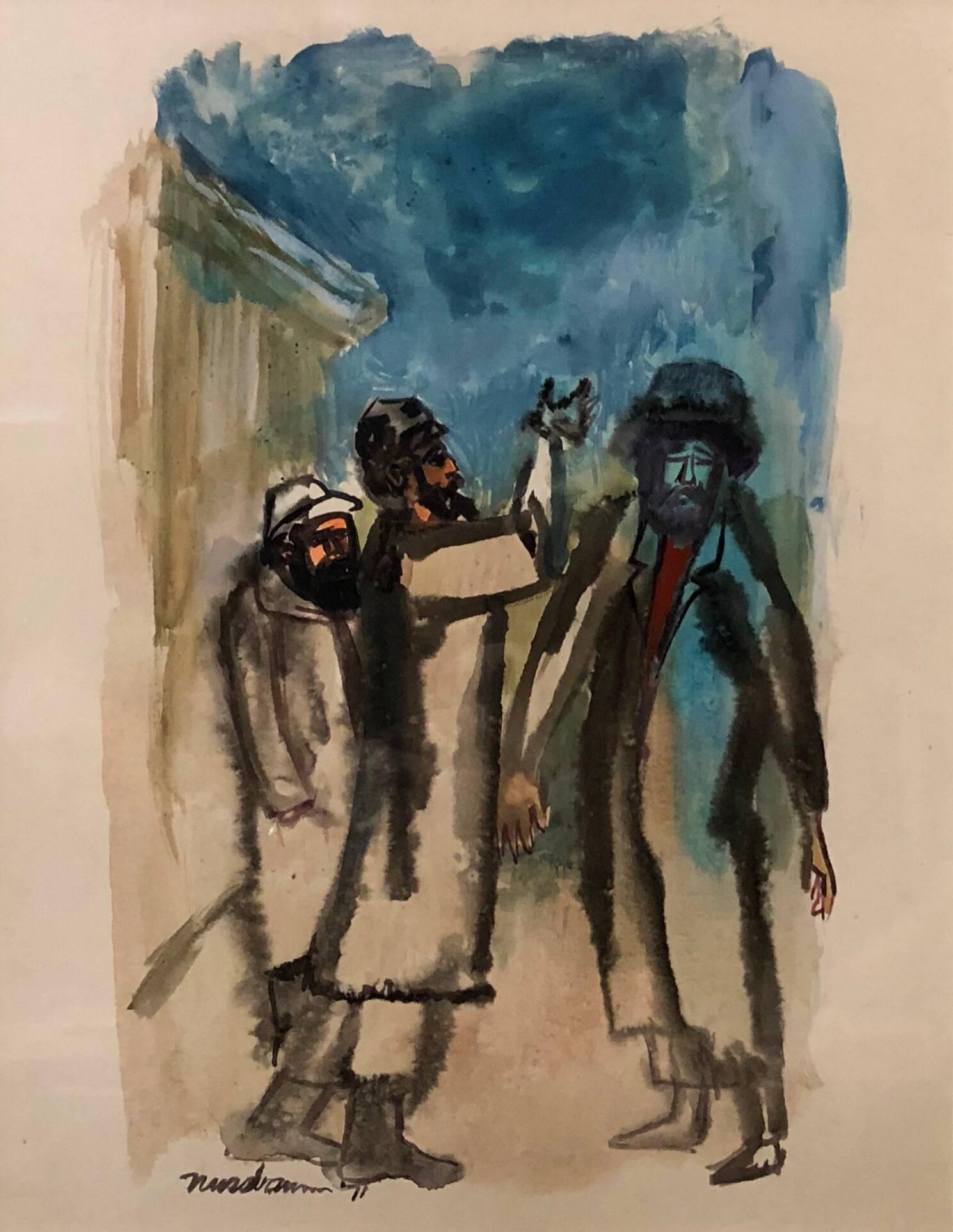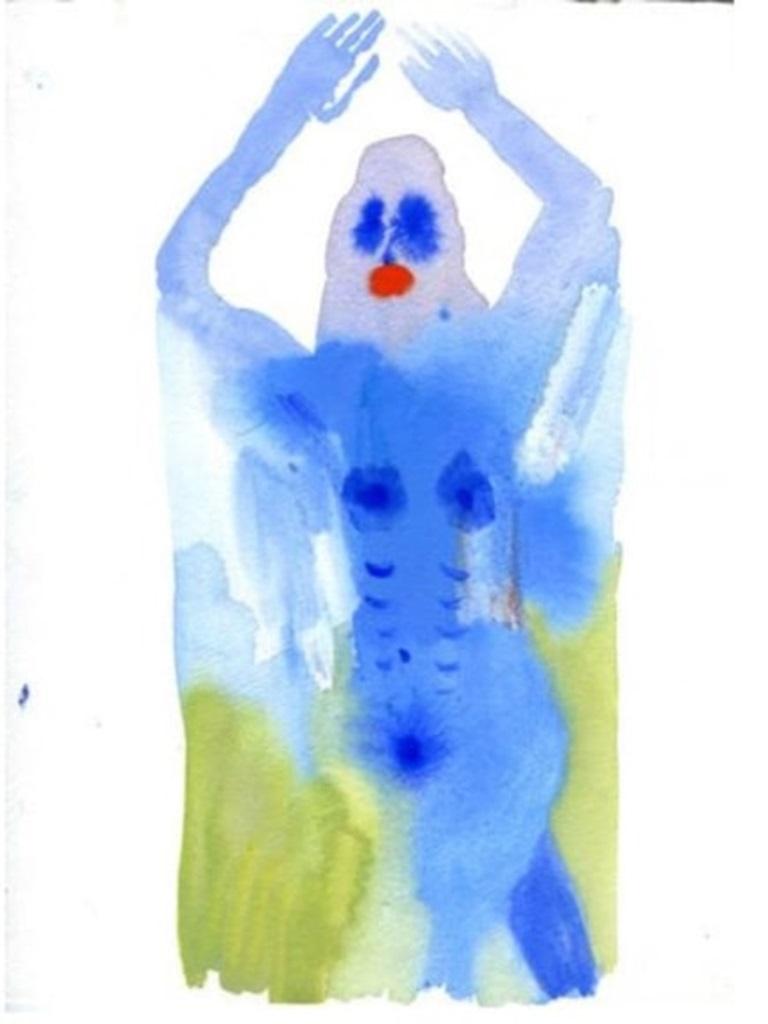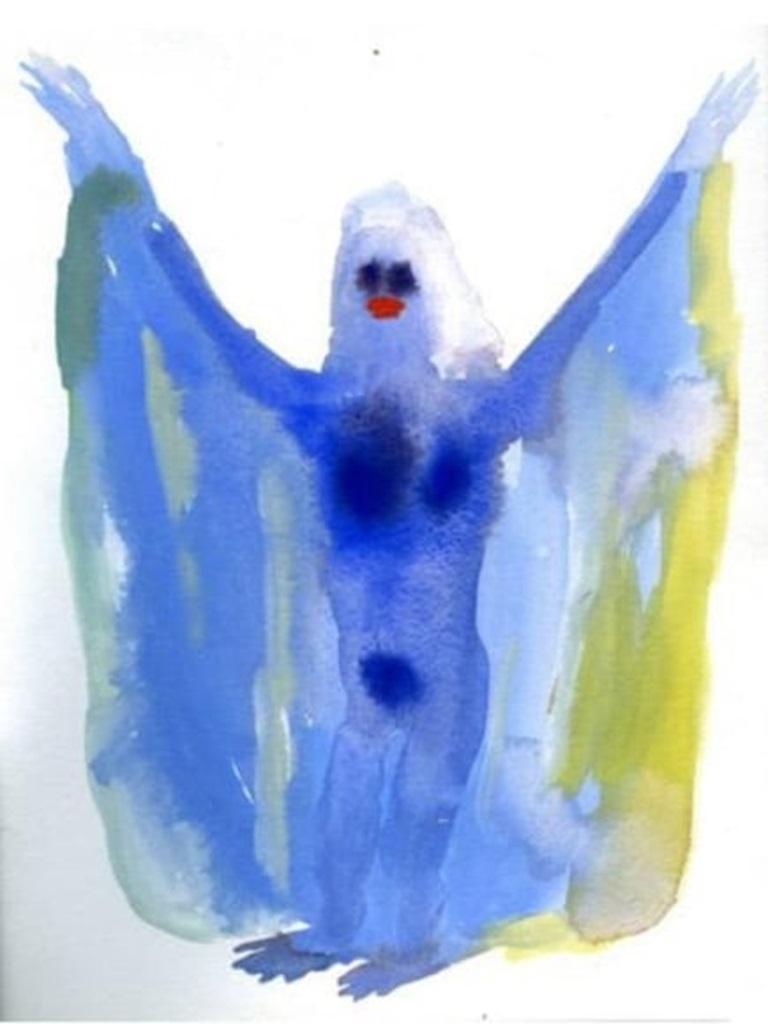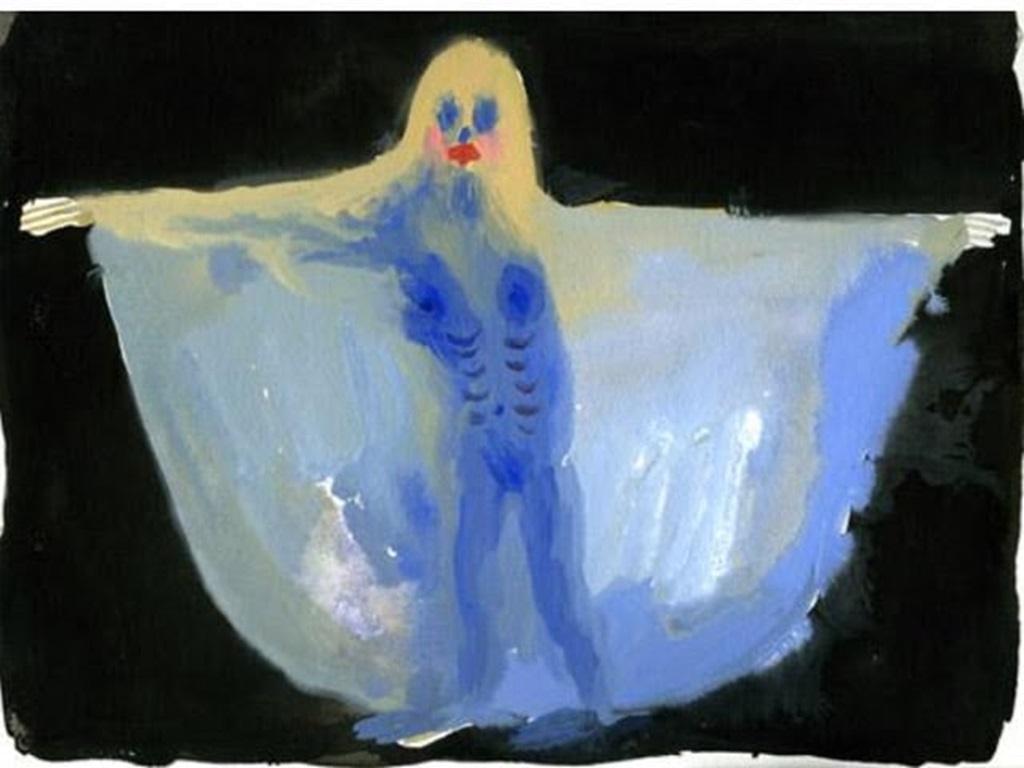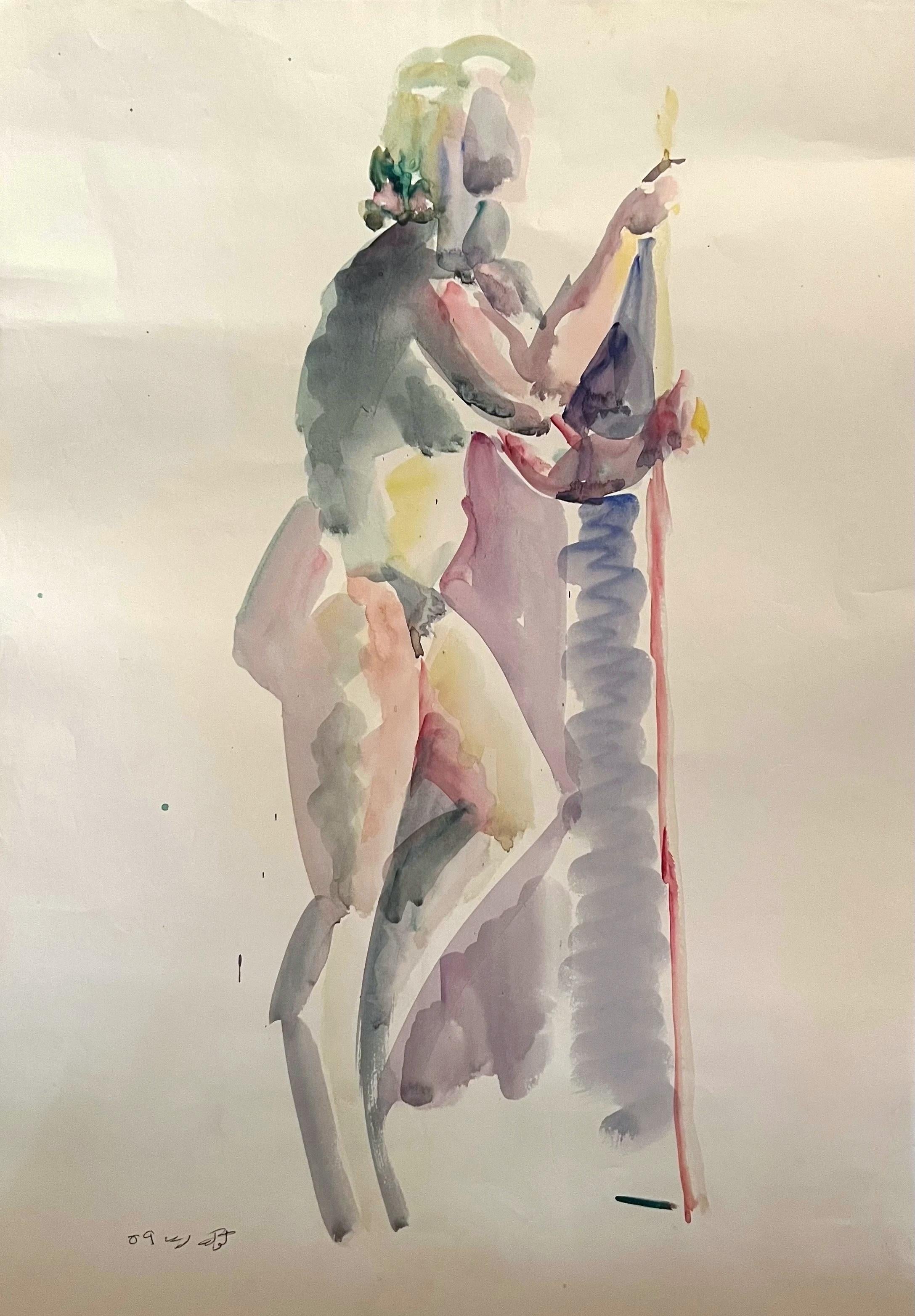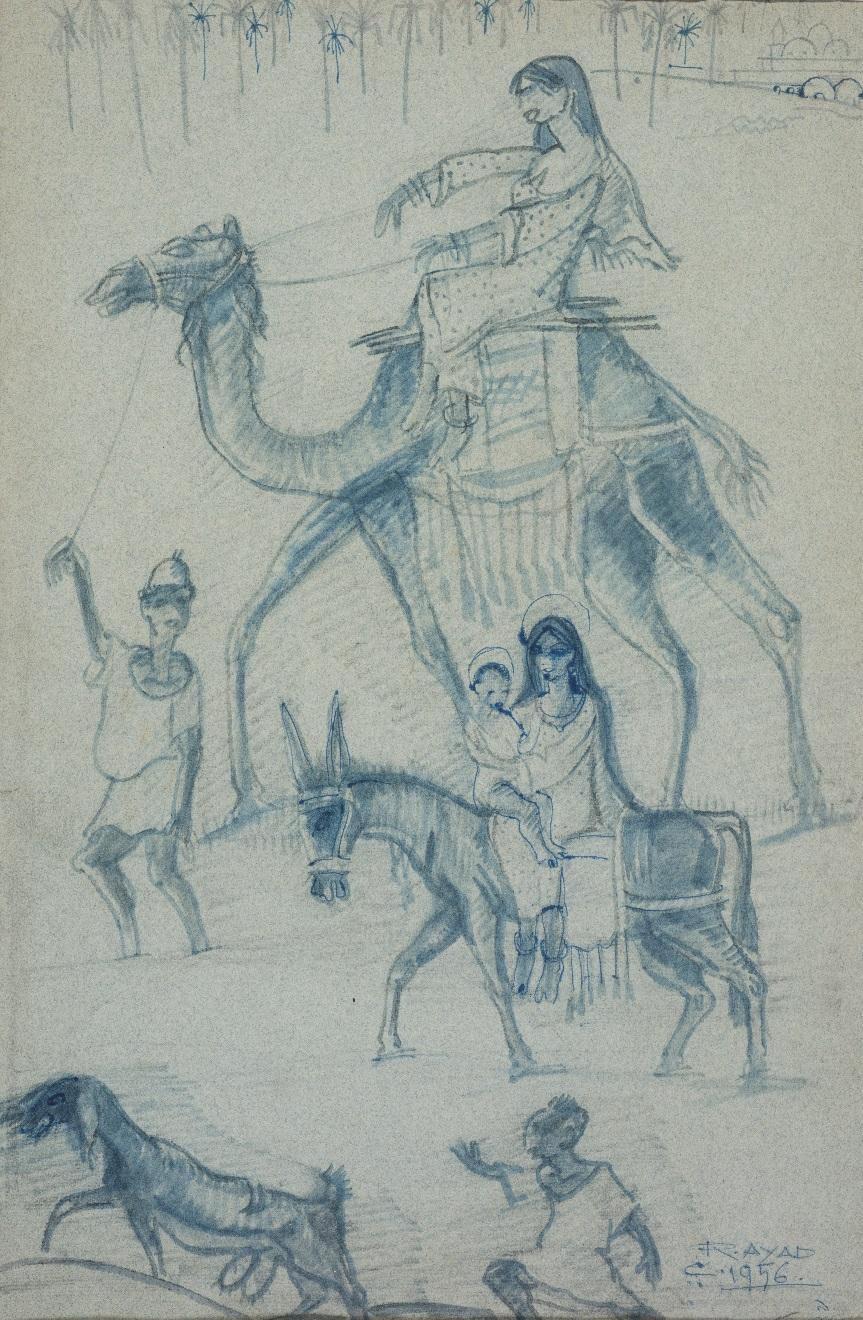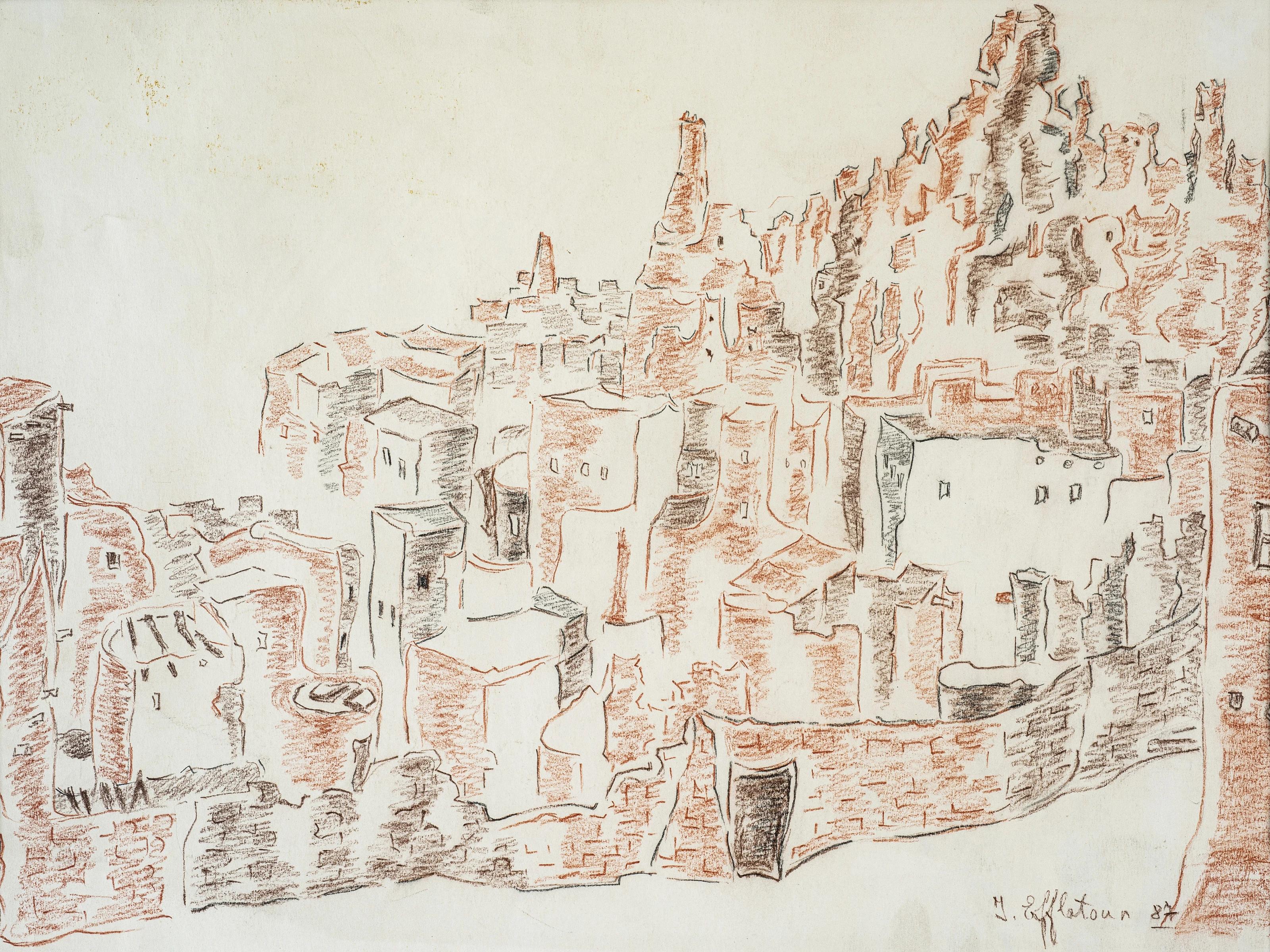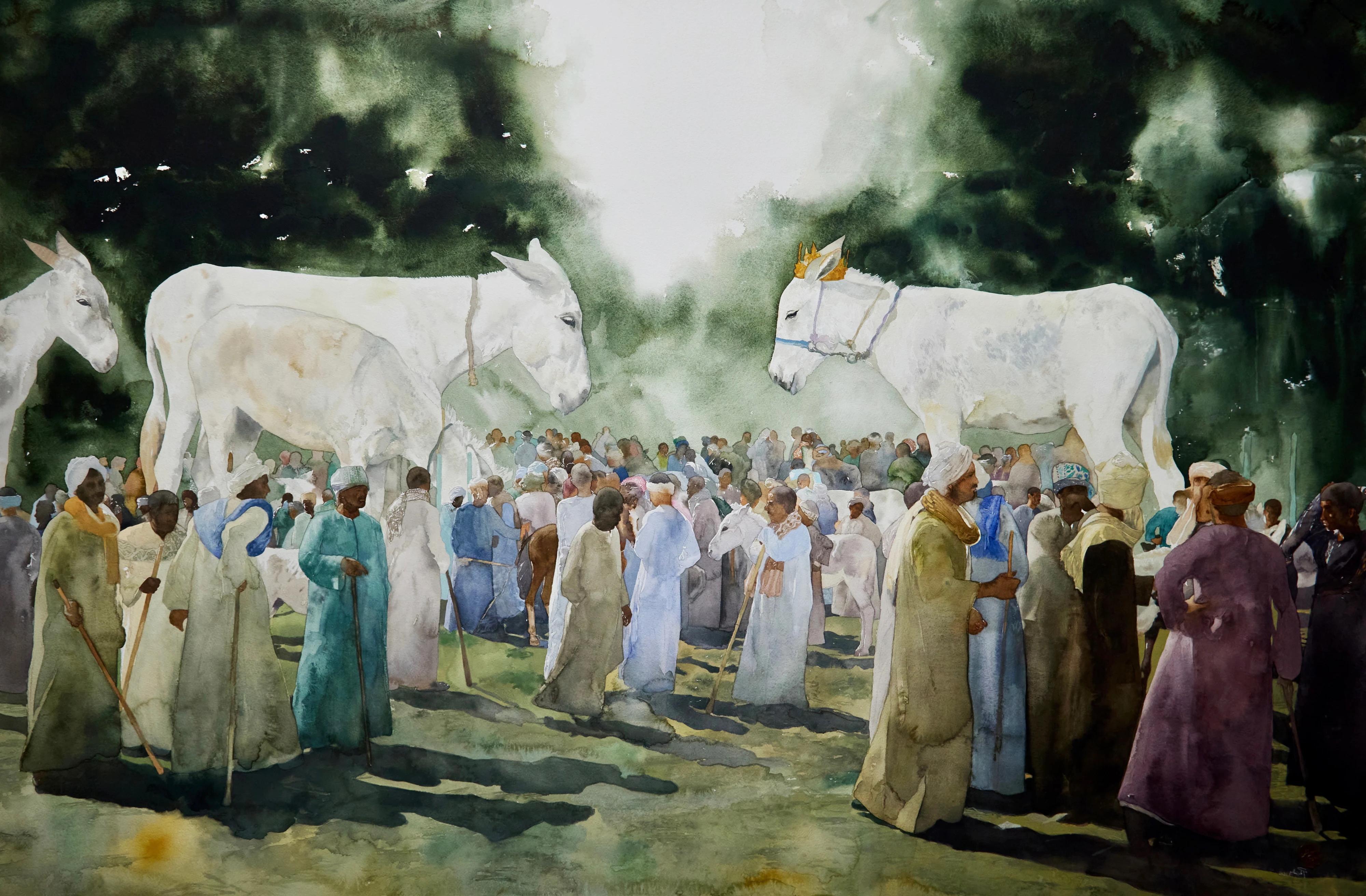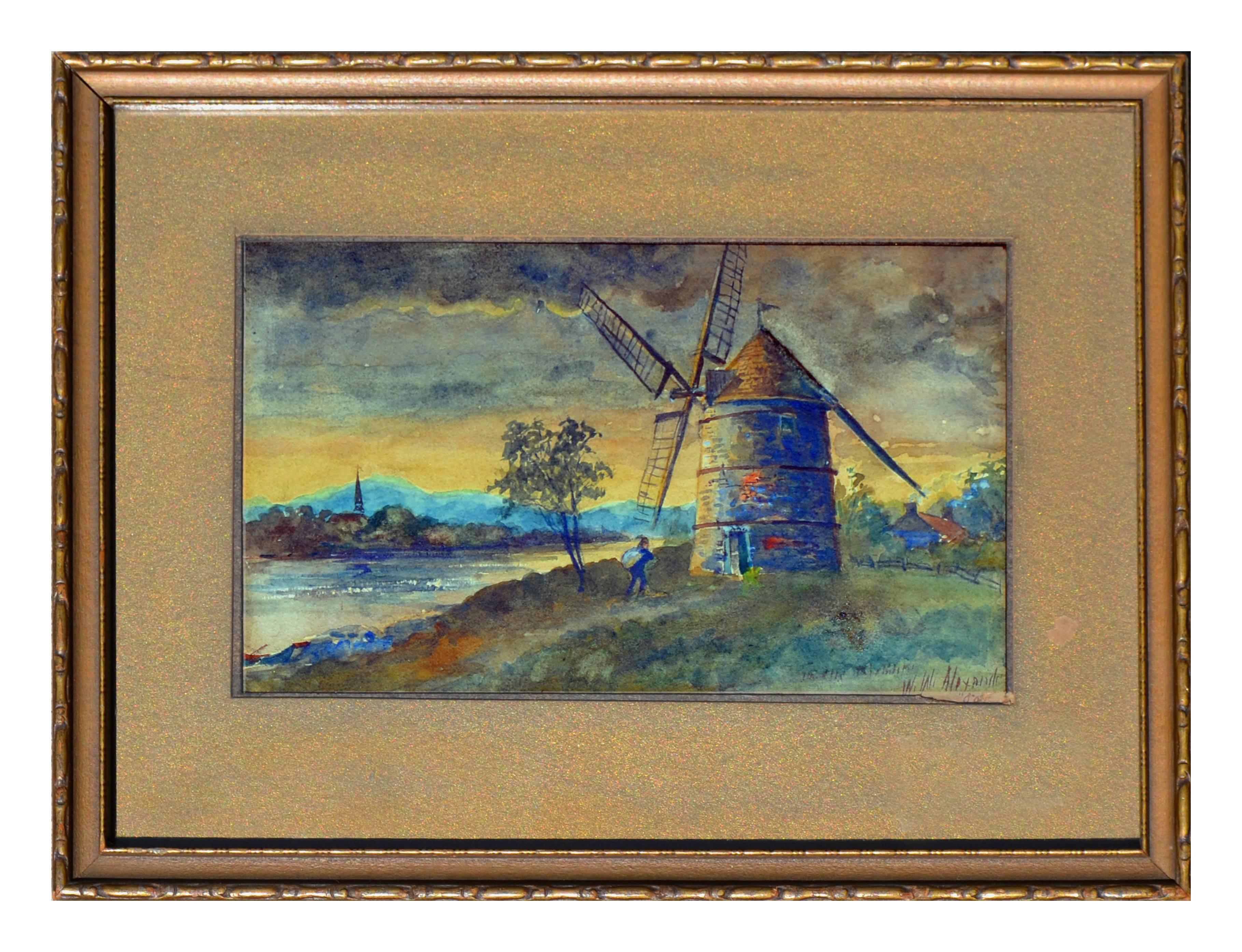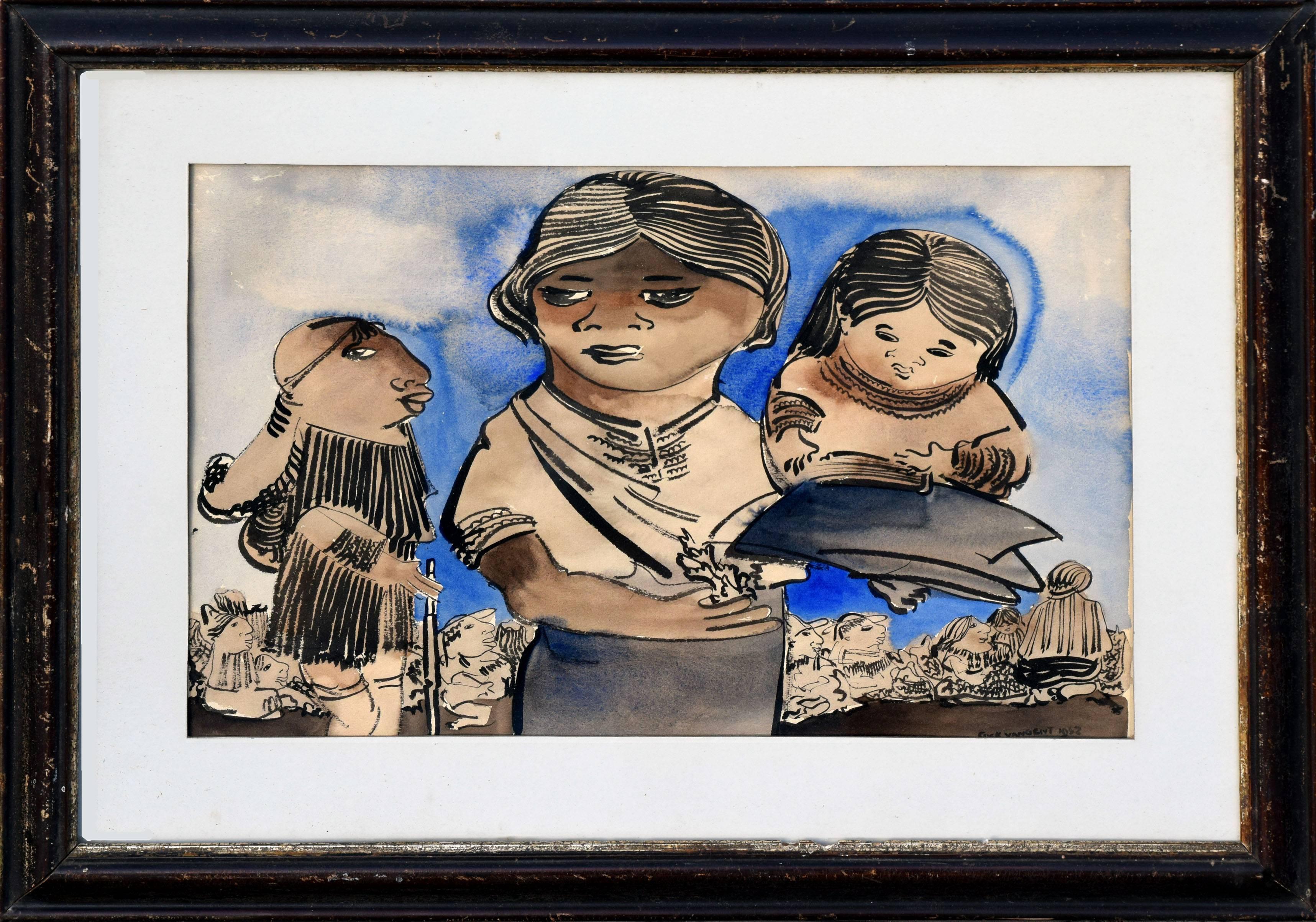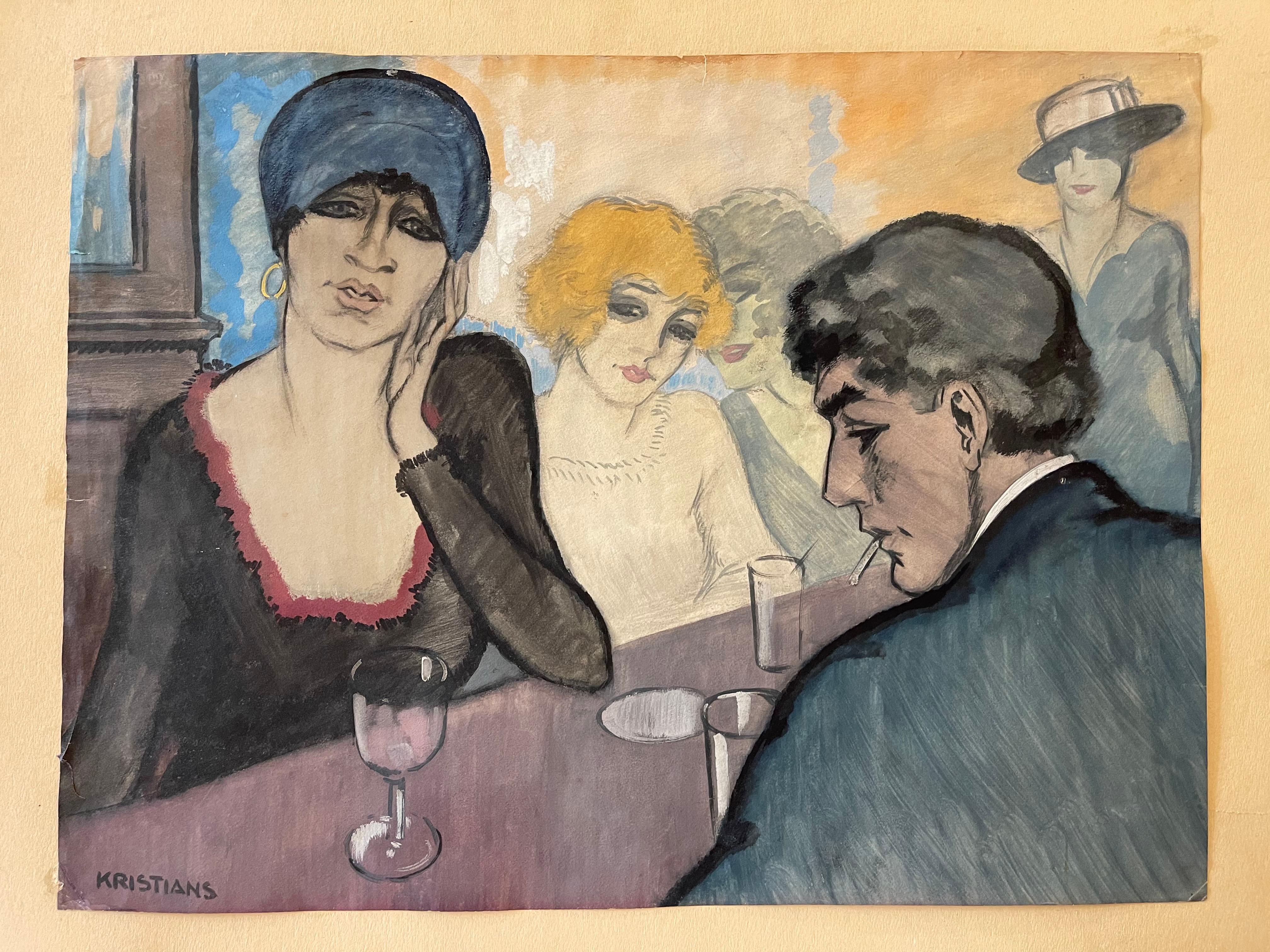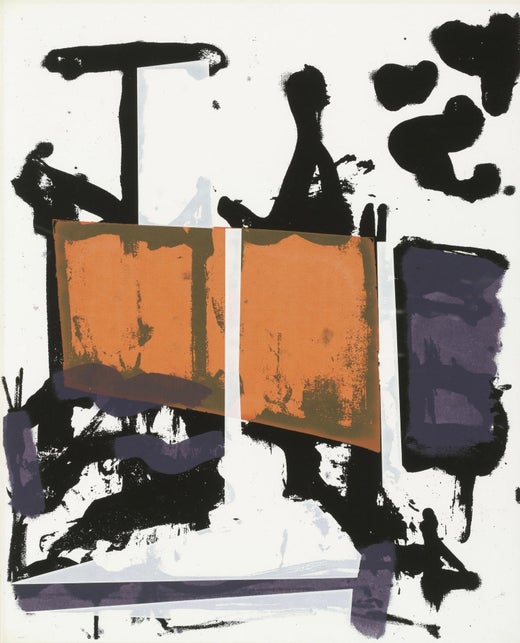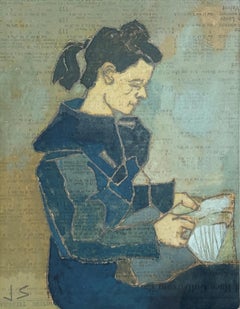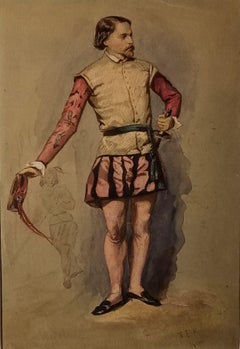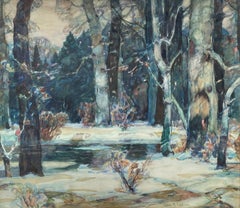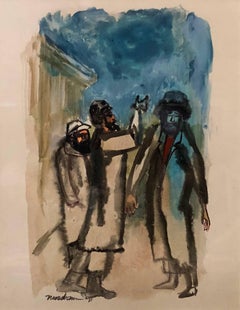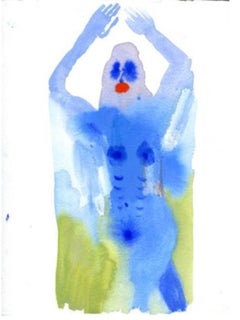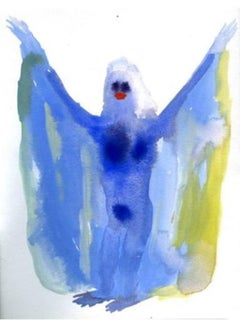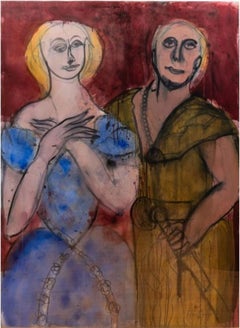
"Amina and Sigmund" Grace Hartigan, Double Portrait, Modernist Figures
View Similar Items
Want more images or videos?
Request additional images or videos from the seller
1 of 5
Grace Hartigan"Amina and Sigmund" Grace Hartigan, Double Portrait, Modernist Figures1986
1986
About the Item
- Creator:Grace Hartigan (1922-2008, American)
- Creation Year:1986
- Dimensions:Height: 87 in (220.98 cm)Width: 63 in (160.02 cm)
- More Editions & Sizes:Unique workPrice: $45,000
- Medium:
- Period:
- Framing:Framing Options Available
- Condition:
- Gallery Location:New York, NY
- Reference Number:1stDibs: LU1841214454492
Grace Hartigan
Grace Hartigan (American, 1922–2008) Grace Hartigan’s work is defined by its bold color, gestural intensity, and a striking synthesis of abstraction and figuration. A central figure in the second generation of Abstract Expressionists, she embraced both spontaneity and structure, often incorporating imagery from contemporary culture, literature, and historical painting. Hartigan was among the few women to achieve prominence in the movement, exhibiting in the landmark Ninth Street Show and becoming the first woman to have a solo exhibition at the Museum of Modern Art. Later in her career, she moved to Baltimore, where she continued painting and teaching, leaving an indelible mark on the next generation of artists. Though her contributions were sometimes overlooked in her time, Hartigan’s fearless approach to modern painting remains a vital part of American art history.
About the Seller
5.0
Platinum Seller
Premium sellers with a 4.7+ rating and 24-hour response times
Established in 2022
1stDibs seller since 2022
104 sales on 1stDibs
Authenticity Guarantee
In the unlikely event there’s an issue with an item’s authenticity, contact us within 1 year for a full refund. DetailsMoney-Back Guarantee
If your item is not as described, is damaged in transit, or does not arrive, contact us within 7 days for a full refund. Details24-Hour Cancellation
You have a 24-hour grace period in which to reconsider your purchase, with no questions asked.Vetted Professional Sellers
Our world-class sellers must adhere to strict standards for service and quality, maintaining the integrity of our listings.Price-Match Guarantee
If you find that a seller listed the same item for a lower price elsewhere, we’ll match it.Trusted Global Delivery
Our best-in-class carrier network provides specialized shipping options worldwide, including custom delivery.More From This Seller
View All"Figure Study" Joseph Solman, Blue and Sepia, Pastel Colors Seated Study
By Joseph Solman
Located in New York, NY
Joseph Solman
Figure Study, circa 1959-60
Signed with initials lower left
Gouache on Racing Form newspaper
Sight 9 x 7 inches
Provenance
Private Collection, Montecito, California
Pr...
Category
1950s Modern Figurative Paintings
Materials
Paper, Gouache, Newsprint
"Untitled, " Crash, Pop Art, Street Art Graffiti, Figure with Clock
By John Crash Matos
Located in New York, NY
Crash
Untitled, 1989
Signed and dated lower left
Watercolor and ink on paper
30 x 20 1/2 inches
A contemporary of Keith Haring and a modern-day master of this present day art form o...
Category
1980s Street Art Figurative Paintings
Materials
Paper, Ink, Watercolor
"Portrait of an Italian Fencer, " John Frederick Kensett, Hudson River School
By John Frederick Kensett
Located in New York, NY
John Frederick Kensett (1816 - 1872)
Portrait of an Italian Fencer, circa 1845-47
Watercolor on wove paper
13 1/8 x 8 1/8 inches
Signed with initials and inscribed lower right "J.F.K. Rome"
From October 1845 through the spring of 1847, Kensett lived in Rome. He attended classes where he sketched from live models, and he sketched in the countryside outside Rome and around Florence, Perugia, and Venice, places he visited with his artist friends. He fulfilled commissions for paintings from Americans in Italy, and by 1847 his career was well established.
Son of an English immigrant engraver, John Kensett lacked enthusiasm for that medium and became one of the most accomplished painters of the second generation of Hudson River School painters. His reputation is for Luminism, careful depiction of light, weather, and atmosphere as they affect color and texture of natural forms. He was particularly influenced by the painting of Asher Durand in that he focused on realism and detail rather than the highly dramatic views associated with Thomas Cole. Going to the western United States in the mid 1850s and the 1860s, he was the first of the Hudson River School painters to explore and paint the West.
Kensett was born and raised in Cheshire, Connecticut, and learned his engraving from his father, Thomas Kensett with whom he worked in New Haven, Connecticut until 1829. He continued working until 1840 as an engraver of labels, banknotes and maps and was employed part of that time by the American Bank Note Company in New York City. There he met Thomas Rossiter, John Casilear, and other artists who urged him to pursue painting. In 1840, he and Rossiter, Asher Durand, and Casilear went to Europe where Kensett stayed for seven years and supported himself by doing engraving but became accomplished in landscape painting.
Having sent canvases of Italian landscapes back to New York, he had a reputation for skillful painting that preceded him. When he returned to New York City in 1847, he was an "instant success" and very sought after by collectors. Two of his Italian landscapes had already been purchased by the American Art Union. By 1849, he was a full member of the National Academy of Design and was generally popular among his peers. His studio was a gathering place with travelers stopping by to see his canvases and to identify "precise locations in the Catskills or Newport or New England in the oil sketches and drawings that covered his walls." (Zellman 170). For the women, he was a popular bachelor, "romantic looking with high forehead and sensitive expression." (Samuels 262)
He was also sought after by many organizations. Among his activities were serving on the committee to oversee the decoration of the United States Capitol in Washington DC, and becoming one of the founders of the Metropolitan Museum in New York.
An inveterate traveler, Kensett spent summers on painting excursions away from New York City. One of these trips was a special painting excursion with fifteen other artists sponsored by the B & O Railroad from Baltimore, Maryland to Wheeling, West Virginia. Unlike many of the Hudson River painters...
Category
1840s Hudson River School Figurative Paintings
Materials
Paper, Watercolor
"Forest Landscape" John F. Carlson, circa 1925 American Impressionist Landscape
By John F. Carlson
Located in New York, NY
John F. Carlson
Forest Landscape, circa 1925
Signed lower right
Watercolor on paper
Sight 21 x 24 1/2 inches
The native Sweden John Fabian Carlson became a household name in New Yo...
Category
1920s American Impressionist Landscape Paintings
Materials
Paper, Watercolor
"China Town" Ernest Fiene, 1925 Modernist Watercolor on Paper Chinatown Scene
By Ernest Fiene
Located in New York, NY
Ernest Fiene
China Town, 1925
Signed and dated to lower right ‘Ernest Fiene 1925’.
Watercolor on paper
18 1/2 x 14 5/8 inches
Ernest Fiene was born in Elberfeld, Germany in 1894. As a teenager, Fiene immigrated to the United States in 1912. He studied art at the National Academy of Design in New York City from 1914 to 1918, taking day classes with Thomas Maynard and evening classes with Leon Kroll. Fiene continued his studies at the Beaux-Arts Institute of Design in New York from 1916 to 1918, adding classes in printmaking at the Art Students League in 1923.
Fiene began his career as an artist in 1919 with his first exhibition of watercolors at the MacDowell Club arranged by his mentor Robert Henri. In 1923 the Whitney Studio Club mounted a large exhibition of his works. The following year he had an exhibition at the New Gallery in New York, which completely sold out all fifty-two works, including paintings, watercolors, drawings, and etchings. With the proceeds of sales from the New Gallery exhibition, Ernest Fiene and his younger brother Paul, a sculptor, built studios in Woodstock, New York in 1925.
In the early Twenties Ernest Fiene painted mostly landscapes of Woodstock and both the Ramapo and Hudson River Valleys. The first monograph from the Younger Artists Series was published on Fiene in 1922. Published in Woodstock, the series went on to include Alexander Brook, Peggy Bacon, and Yasuo Kuniyoshi. The book reproduced 1 illustration in color and another 27 reproductions in black and white. Around 1925 Fiene became fascinated with the intensity, excitement, and opportunities for color harmonies New York City offered as a subject. His paintings shifted to urban and industrial themes with architecture, industry, and transportation becoming his subjects.
By 1926 Fiene had attracted the dealer Frank K.M. Rehn, who gave him a one-man exhibition that year, which travelled to the Boston Arts Club. C.W. Kraushaar Galleries gave Fiene a one-man exhibition of urban, landscape, portrait, and still life paintings in 1927. Julianna Force, the director of the Whitney Studio Club and first director of the Whitney Museum of American Art, included two of Fiene’s paintings in a fall exhibition in 1928. The Whitney Studio Club showed Fiene’s paintings in a two-man exhibition with Glenn O. Coleman that year and acquired three of Fiene’s paintings. Also in 1928 Fiene became affiliated with Edith Halpert’s Downtown Gallery where he had an exhibition of 20 lithographs in the spring. Fiene sold his house in Woodstock in 1928 to spend more of his time in New York City.
With so many successful exhibitions, Fiene returned to Paris in 1928-29 where he rented Jules Pascin's studio and studied at the Académie de la Grande Chaumière. In France, Fiene painted both landscape and urban subjects developed from ideas influenced by Cubist geometry and the use of flat areas of broad color. Upon returning to New York in 1930, Fiene used this new approach to continue to paint New York skyscraper and waterfront subjects, as well as to begin a series of paintings on changing old New York based on the excavations for Radio City Music Hall and the construction of the Empire State Building. Frank K.M. Rehn Galleries exhibited this series, titled “Changing Old New York,” in 1931. Fiene also has solo exhibitions at Rehn Galleries in 1930 and 1932. Fiene’s oil paintings are exhibited at the Chicago Arts Club in 1930 as well.
Fiene was included in the Museum of Modern Art’s exhibition Painting and Sculpture by Living Americans in December of 1931. Visiting New York, Henri Matisse saw the exhibition and called Fiene’s Razing Buildings, West 49th Street the finest painting he had seen in New York. Fiene had two mural studies from his Mechanical Progress series exhibited at the Museum of Modern Art’s exhibition Murals by American Painters and Photographers in 1932. Fiene sent View from my Window which depicts Fiene working on a lithograph stone while looking out his window to the newly completed Empire State Building to the Carnegie International in 1931. In 1932 Fiene participated in the first Biennial of American Painting at the Whitney Museum and his prints were included in exhibitions at the Downtown Gallery and the Wehye Gallery. In the same year, Fiene was awarded a Guggenheim fellowship to further study mural painting in Florence, Italy.
On his return from Italy in 1933 Fiene re-engaged himself in New York City life and won several public and private mural projects. Fiene resumed his active exhibition schedule, participating in two group exhibitions at the Whitney Museum and a one-man exhibition of recent paintings at the Downtown Gallery in January 1934. In 1933 he purchased a farm in Southbury, Connecticut, which added Connecticut scenes to his landscape subjects. This was also the year Fiene began to spend summers on Monhegan Island, Maine, where he painted seascapes, harbor scenes, and still lifes.
Fiene’s landscape paintings attracted numerous commissions as part of the American Scene movement. Through the fall and winter of 1935-36, Fiene took an extended sketching trip through the urban, industrial, and farming areas of Pennsylvania and West Virginia. Most of the twenty-four Pennsylvania urban and rural paintings from this trip were featured in an exhibition held at the First National Bank in Pittsburgh in October of 1937 by the Pittsburgh Commission for Industrial Expansion. Fiene said of these works that he formed rhythm, opportunity for space and color, and integrity in the Pennsylvania mill and furnace paintings. Fiene received the silver medal for one of the Pittsburgh paintings...
Category
1920s Modern Figurative Paintings
Materials
Paper, Watercolor
"Mothers and Children, North Africa" Martha Walter, Impressionist Watercolor
By Martha Walter
Located in New York, NY
Martha Walter
Mothers and Children, North Africa
Signed lower right
Watercolor on paper
6 1/2 x 7 1/2 inches
Martha Walter was best known as a painter of colorful beach scenes and ...
Category
Early 20th Century American Impressionist Figurative Paintings
Materials
Paper, Watercolor
You May Also Like
Modernist American Judaica Painting Rabbis in Conversation
By Ervin B. Nussbaum
Located in Surfside, FL
In this painting, Nussbaum portrays Rabbi in lively conversation outside the synagogue in a sketch-like manner without focusing on any specific details. The vibrant colors used in th...
Category
1970s Modern Figurative Paintings
Materials
Paper, Watercolor, Gouache
Temple of the soul
Located in Zofingen, AG
Amidst the chaos of the material world, a temple rises—an ethereal reflection of a profound truth: the illusory nature of existence. In the ancient teachings of Hinduism and Buddhism...
Category
2010s Contemporary Abstract Paintings
Materials
Paper, Watercolor
Blue Dancer #2, Gouache on Paper Painting by Allison Schulnik, 2013
By Allison Schulnik
Located in Orange, CA
Blue Dancer #2, Gouache on Paper Painting by Allison Schulnik, 2013
Additional information:
Medium: Gouache on Paper
Dimensions: 11.5 × 9 in (29.2 × ...
Category
21st Century and Contemporary Figurative Paintings
Materials
Paper, Gouache
Blue Dancer, Gouache on Paper Painting by Allison Schulnik, 2013
By Allison Schulnik
Located in Orange, CA
Blue Dancer, Gouache on Paper Painting by Allison Schulnik, 2013
Additional information:
Medium: Gouache on Paper
Dimensions: 11.5 × 9 in (29.2 × 22....
Category
21st Century and Contemporary Figurative Paintings
Materials
Paper, Gouache
Blue Dancer #3, Gouache on Paper Painting by Allison Schulnik, 2013
By Allison Schulnik
Located in Orange, CA
Blue Dancer #3, Gouache on Paper Painting by Allison Schulnik, 2013
Additional information:
Medium: Gouache on Paper
Dimensions: 9 × 11.5 in (22.9 × 29.2 cm)
About artist: Allison ...
Category
21st Century and Contemporary Figurative Paintings
Materials
Paper, Gouache
"Bathing Nude III" Watercolor Painting 24" x 17" inch (1959) by Kawkab Youssef
Located in Culver City, CA
"Bathing Nude III" Watercolor Painting 24" x 17" inch (1959) by Kawkab Youssef
Signed and dated 1959
A short history of Kawkab Youssef El-Assal:
Wit...
Category
20th Century Post-War Nude Drawings and Watercolors
Materials
Paper, Watercolor
